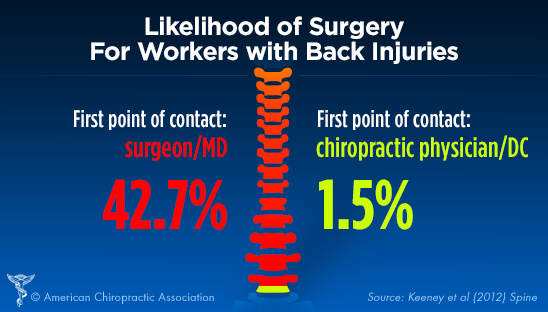If you're experiencing pain in the back, your body may be attempting to tell you something more than just pain. The method your back really feels can give important hints regarding your total health. Comprehending the details kind of pain you're feeling and any kind of coming with signs and symptoms is vital to untangling the secret behind your pain. Let's explore the common conditions and symptoms connected with different kinds of neck and back pain to shed light on what your body may be signaling.
Sorts Of Back Pain
When it comes to pain in the back, there are various types that you might experience. One usual type is muscular tissue pain, frequently brought on by overuse, stress, or injury to the muscular tissues and tendons supporting the spinal column. This type of discomfort can vary from mild pain to serious and devastating pain.
One more kind is nerve pain, which can result from problems like herniated discs or sciatic nerve pain. Nerve pain frequently offers as a sharp, shooting sensation that radiates down the leg.
Joint discomfort in the back can stem from concerns like joint inflammation or sacroiliac joint disorder. This type of pain is typically really felt in the lower back and can be intensified by specific movements.
Furthermore, pain in the back can be related to architectural problems such as spinal stenosis or vertebral cracks. Recognizing the kind of back pain you're experiencing is critical in identifying the proper therapy and management techniques.
Common Manifestations to Look For
Moving past the various sorts of back pain, it is necessary to recognize the usual signs that can indicate underlying issues.
Consistent neck and back pain that gets worse with motion or during the night might indicate an extra severe issue. Tingling or prickling in the legs or feet, particularly when accompanied by weakness, may indicate a nerve-related problem. If you experience abrupt weight-loss in addition to neck and back pain, maybe an indicator of a much more systemic condition.
Focus on any kind of changes in bladder or bowel function, as this could be linked to spine compression. Fever, chills, or evening sweats combined with pain in the back may indicate an infection. Watch out for https://should-you-go-to-the-doct39406.blazingblog.com/30745175/exactly-how-to-select-one-of-the-most-ideal-pillow-for-reliable-neck-pain-alleviation-a-thorough-guide that emits down one or both legs, potentially a measure of sciatica.
Health Issues Linked to Pain In The Back
If you experience pain in the back, it's crucial to recognize the prospective health and wellness problems connected to this discomfort. Back pain can be a symptom of various underlying concerns, consisting of muscular tissue pressures, herniated discs, osteo arthritis, spine constriction, and also conditions like kidney rocks or infections.
pain across lower back are common and usually result from raising heavy items or abrupt activities.
Herniated discs occur when the soft tissue between vertebrae protrudes, causing nerve inflammation.
Osteoarthritis, a degenerative joint illness, can lead to pain in the back as cartilage wears down.
Spinal stenosis, the constricting of the spinal canal, can tax nerves.
Kidney rocks might trigger extreme back pain if they move right into the urinary system system.
chiropractic care clinic like spine osteomyelitis can also show up as back pain. Comprehending these possible health and wellness conditions can assist you seek appropriate treatment and administration for your pain in the back.
Conclusion
So, next time your back hurts, focus on the sort of discomfort and coming with signs and symptoms. It could be a signal from your body about underlying health problems like muscular tissue stress, nerve concerns, joint troubles, and even structural problems. By identifying these signs, you can take proactive actions to deal with the source of your back pain and boost your total wellness and health.
